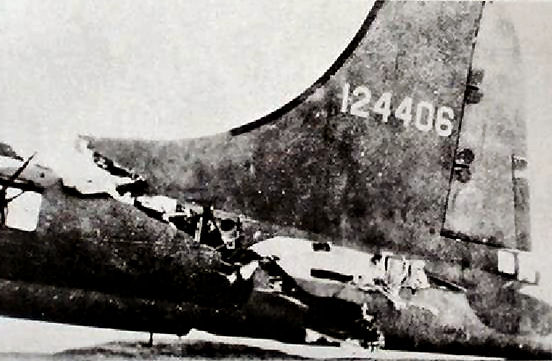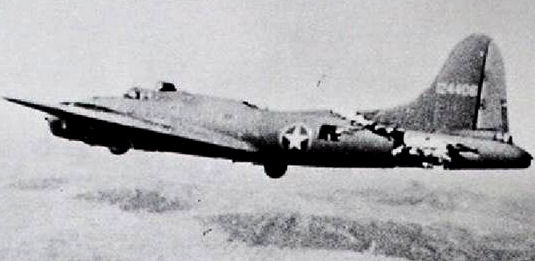|
|
|
Radschool Association Magazine - Vol 40 Page 12 |
|
Privacy Policy | Editorial Policy | Profit Policy | Join the Association | List of Members | Contact us | Index | Links |
|
Back Go to page: 1 2 3 4 5 6 7 8 9 10 11 12 13 14 15 16 17 18 19 20 Forward |
|
|
|
Air Marshal, Sir Richard Williams.
Richard Williams is the most significant figure in the history of
the Royal Australian Air Force. On a calm morning at Point Cook,
Victoria in November 1914, he completed three
A thin, intense man whose high forehead and penetrating gaze accurately indicated his probing intellect, Williams was born in Moonta, South Australia in 1890, the eldest child of a copper miner who laboured underground. Educated to junior certificate level in the State school system, Williams worked in a bank and served in the militia before joining the Permanent Forces in 1912. He was selected for pilot training in the budding Australian Flying Corps in 1914.
Strong minded and confident, Williams rapidly established himself as a leader in the new art of air warfare. After deploying to the Middle East in 1916, he was appointed firstly to command the AFC's No 1 Squadron, and then a wing of the Royal Air Force, a considerable achievement for a 'colonial' in those days. A brave and capable pilot, he was decorated with the DSO and OBE for his valour and leadership in combat and was twice mentioned in dispatches.
The Royal Australian Air Force was formed in 1921 against the express wishes of Australia's generals and admirals, who lacked the vision to foresee the dominant role air power would soon come to play in the defence of Australia. As Chief of the Air Staff, Williams needed all of his considerable political skills to keep his fledgling service from being dismembered by the Army and Navy. Sharp, even waspish in his manner, Williams worked shrewdly to preserve and promote his service. He established a personal correspondence with the British Empire's greatest and most influential airman, Marshal of the RAF Sir Hugh Trenchard. He developed a brilliant plan to defend Australia against the emerging threat of Japan by employing air power in the sea and air approaches which constitute the nation's natural defensive barrier and fought tirelessly in the political battle against the Air Force's enemies.
|
|
Despite his somewhat puritanical, stiff-necked manner and legendary pedantic attention to detail - the latter characteristic which made his frequent inspection of Royal Australian Air Force units a severe trial for those on the receiving end - Williams' devotion to his service and his manifest intellect made him an admired leader.
Notwithstanding his great responsibilities and demanding administrative workload, Williams found time to burnish his operational reputation with a pioneering flight into the Pacific islands in 1926. He had also become the first Australian Air Force officer to complete staff college training when he graduated from the British Army and RAF courses in 1924; while ten years later he added attendance at the Imperial Defence College to his impressive qualifications.
By the early 1930s all threats to the Royal Australian Air Force's independent existence had been averted. Shortly afterwards the government approved a dramatic expansion of the Air Force, a decision which not only recognised the likelihood of war in the near future but also amounted to a tacit acknowledgment that Williams had been right.
That may have been cold comfort to Williams who in February 1939 was removed from office, ostensibly because of the allegedly high accident rate. A more likely reason for the dismissal was that, after almost 20 years of political in-fighting on behalf of his service, Dicky Williams had simply made too many enemies.
Air Vice-Marshal Williams spent most of World War II overseas, firstly in the United Kingdom and then as the Royal Australian Air Force's senior representative in Washington. He was retired against his wishes in 1946 by the Chifley Government, extraordinarily shabby treatment of a man who had contributed so much to his country. On leaving the Air Force he became Director-General of Civil Aviation. He published immensely interesting and invaluable (if understandably idiosyncratic) memoirs.
Air Marshal Sir Richard Williams, KBE, CB, DSO, died in 1980. He is properly remembered and honoured as the 'Father' of the Royal Australian Air Force.
|
|
Male or Female: FREEZER BAGS: They are male, because they hold everything in, but you can see right through them.
|
|
The Harrier.
Back in December, 2010, after 41 years of service, the UK Harrier “Jump Jets” took to the skies for their final farewell. The occasion was billed as a celebration but, for many, the mood was as sombre as the gloomy weather. The 79-strong Harrier fleet, the revolutionary aircraft that helped Britain defeat Argentina in the Falklands War in 1982, was being scrapped as a result of Government defence cuts.
Introduced by the RAF in 1969, they were famed for their ability to hover above the ground, a distinctive feature which enabled them to fly in and out of areas close to a battlefield that conventional aircraft could not reach although the weight of fuel required for vertical take-off limited its weapons load.
|
|
|
|
|
|
A cherished piece of British military and aviation history is now lost. The aircraft was described as a true icon and stood testament to the innovation and excellence of British design and engineering and the skill and courage of RAF airmen.
They played a crucial role in defending the UK’s interests, seeing action in every conflict from the Falklands to the two Gulf Wars plus five hard years in Afghanistan. In the Falklands they were known as the ‘Black Death’ by Argentine pilots as they were responsible for shooting down 25 enemy aircraft without a single combat loss
Considered one of the country’s greatest technological achievements, they were the first jets in the world to be able to take off and land vertically.
After a truly distinguished service life with the RAF and the Royal Navy, they must surely take their place in history as one of aviation’s greats.’
Critics of the Gov’t’s decision to dump the Harrier were outraged as it means the Royal Navy will not have a sea-borne strike capacity until 2020 when a new aircraft carrier is kitted out with jets.
|
|
|
|
The last-ever sortie: Harrier pilots walk to their aircraft at RAF Cottesmore.
|
|
Having scrapped the aircraft, the UK Government then sold the lot to the US for the paltry sum of $255 million (that’s $3,5M each) where they will be used as spare parts for the US Harriers as the US still considers them viable fighting machines. The UK will not have a replacement aircraft until the end of the decade when the US built F-35B jump jet will (should??) be ready. This now leaves Britain with two new super-carriers but no jump jets to fly from them. It is expected that the F-35 will cost as much as $300 million each, more per plane than the Americans paid for Britain’s entire Harrier fleet.
The US parked the aircraft at the Aerospace Maintenance and Regeneration Group boneyard (AMARG) in Tucson, Arizona which contains more than 4000 aircraft and is known as the world’s largest military aircraft cemetery.
The US were very pleased with the deal and said it made sense because many of the British jets had recently undergone a refit and the US already had pilots who could fly them. One US Defence person said ‘We are taking advantage of all the money spent on them. It’s like we’re buying a car with only 15,000 miles on it. These are very good platforms and we’ve already got trained pilots.’ The US Navy, widely acknowledged as the world’s most technologically advanced, believes that the purchase of the British Harriers will allow it to keep flying its own planes into the middle of the next decade.
As my old granny used to say, one man’s trash is another man’s treasure!!
|
|
THE REMOTE CONTROL; Female, It easily gives a man pleasure, he'd be lost without it, and while he doesn't always know which buttons to push, he just keeps trying.
|
|
Piggy Back.
Jack “Simple” Nickle was a NASA pilot and as a NASA pilot he got to fly some weird aeroplanes. Some years ago he flew a Boeing 747 from Columbus AFB in Mississippi back to the Kennedy Space Centre in Florida.
This is his story.
“Well, it's been 48 hours since I landed the 747 with the shuttle Atlantis on top and I am still buzzing from the experience. I have to say that my whole mind, body and soul went into the professional mode just before engine start in Mississippi, and stayed there, where it all needed to be, until well after the flight...in fact, I am not sure if it is all back to normal as I type this email. The experience was surreal. Seeing that "thing" on top of an already overly huge aircraft boggles my mind. The whole mission from take-off to engine shutdown was unlike anything I had ever done. It was like a dream...someone else's dream.
We
took off from Columbus AFB on their 12,000 foot runway, of which I
used 11,999.5 feet to get the wheels off the ground. We were at the
8,500 feet mark, throttles full power, nose wheels still hugging the
ground, copilot calling out decision speeds, the weight of Atlantis
now screaming through my fingers clinched tightly on the controls,
tires heating up to their near maximum temperature from the speed
and the weight, and not yet at rotation speed,
If I had waited until rotation speed, we would not have rotated enough to get airborne by the end of the runway. So I pulled on the controls early and started our rotation to the take-off attitude. The wheels finally lifted off as we passed over the stripe marking the end of the runway and my next hurdle (physically) was a line of trees 1,000 feet off the departure end of Runway 16. All I knew was we were flying and so I directed the gear to be retracted and the flaps to be moved from Flaps 20 to Flaps 10 as I pulled even harder on the controls. I must say, those trees were beginning to look a lot like those brushes in the drive through car washes so I pulled even harder yet! I think I saw a bird just fold its wings and fall out of a tree as if to say "Oh just take me". Okay, we cleared the trees, duh, but it was way too close for my laundry.
As we started to actually climb, at only 100 feet per minute, I smelled something that reminded me of touring the Heineken Brewery in Europe ....I said "is that a skunk I smell?" and the veterans of shuttle carrying looked at me and smiled and said "Tires"! I said "TIRES??? OURS???" They smiled and shook their heads as if to call their Captain an amateur...okay, at that point I was. The tires were so hot you could smell them in the cockpit. My mind could not get over, from this point on, that this was something I had never experienced. Where's your mom when you REALLY need her?
The flight down to Florida was an eternity. We cruised at 250 knots indicated, giving us about 315 knots of ground speed at 15,000ft. The miles didn't click by like I am used to them clicking by in a fighter jet at MACH .94. We were burning fuel at a rate of 40,000 pounds per hour or 130 pounds per mile, or one gallon every length of the fuselage. The vibration in the cockpit was mild, compared to down below and to the rear of the fuselage where it reminded me of that football game I had as a child where you turned it on and the players vibrated around the board. I felt like if I had plastic clips on my boots I could have vibrated to any spot in the fuselage I wanted to go without moving my legs...and the noise was deafening.
The 747 flies with its nose 5 degrees up in the air to stay level, and when you bank, it feels like the shuttle is trying to say "hey, let's roll completely over on our back"..not a good thing I kept telling myself. SO I limited my bank angle to 15 degrees and even though a 180 degree course change took a full zip code to complete, it was the safe way to turn this monster. Airliners and even a flight of two F-16s deviated from their flight plans to catch a glimpse of us along the way. We dodged what was in reality very few clouds and storms, despite what everyone thought, and arrived in Florida with 51,000 pounds of fuel too much to land with.
We can't land heavier than 600,000 pounds total weight and so we had to do something with that fuel. I had an idea...let's fly low and slow and show this beast off to all the taxpayers in Florida lucky enough to be outside on that Tuesday afternoon. So at Ormond Beach we let down to 1,000 feet above the ground/water and flew just east of the beach out over the water Then, once we reached the NASA airspace of the Kennedy Space Center, we cut over to the Banana/Indian Rivers and flew down the middle of them to show the people of Titusville, Port St.Johns and Melbourne just what a 747 with a shuttle on it looked like. We stayed at 1,000 feet and since we were dragging our flaps at "Flaps 5", our speed was down to around 190 to 210 knots. We could see traffic stopping in the middle of roads to take a look. We heard later that a Little League Baseball game stopped to look and everyone cheered as we became their 7th inning stretch. Oh, say can you see...
After reaching Vero Beach, we turned north to follow the coast line back up to the Shuttle Landing Facility (SLF). There was not one person laying on the beach...they were all standing and waving! "What a sight" I thought...and figured they were thinking the same thing. All this time I was bugging the engineers, all three of them, to re-compute our fuel and tell me when it was time to land. They kept saying "Not yet Triple, keep showing this thing off" which was not a bad thing to be doing. However, all this time the thought that the landing, the muscling of this 600,000 pound beast, was getting closer and closer to my reality. I was pumped up! We got back to the SLF and were still 10,000 pounds too heavy to land so I said I was going to do a low approach over the SLF going the opposite direction of landing traffic that day. So at 300 feet, we flew down the runway, rocking our wings like a whale rolling on its side to say "hello" to the people looking on! One turn out of traffic and back to the runway to land...still 3,000 pounds over gross weight limit. But the engineers agreed that if the landing were smooth, there would be no problem. "Oh thanks guys, a little extra pressure is just what I needed!"
So we landed at 603,000 pounds and very smoothly if I have to say so myself. The landing was so totally controlled and on speed, that it was fun. There were a few surprises that I dealt with, like the 747 falls like a rock with the orbiter on it if you pull the throttles off at the "normal" point in a landing and secondly, if you thought you could hold the nose off the ground after the mains touch down, think again...IT IS COMING DOWN!!! So I "flew it down" to the ground and saved what I have seen in videos of a nose slap after landing. Then I turned on my phone after coming to a full stop only to find 50 bazillion emails and phone messages from all of you who were so super to be watching and cheering us on! What a treat, I can't thank y'all enough.
For those who watched, you wondered why we sat there so long. Well, the shuttle had very hazardous chemicals on board and we had to be "sniffed" to determine if any had leaked or were leaking. They checked for Monomethylhydrazine (N2H4) and nitrogen tetroxide (N2O4). Even though we were "clean", it took way too long for them to tow us in to the mate-demate area. Sorry for those who stuck it out and even waited until we exited the jet. I am sure I will wake up in the middle of the night here soon, screaming and standing straight up dripping wet with sweat from the realization of what had happened. It was a thrill of a lifetime. Again I want to thank everyone for your interest and support. It felt good to bring Atlantis home in one piece after she had worked so hard getting to the Hubble Space Telescope and back.”
You can see a video of how they load the thing HERE (this is a large file and will take a while to download - worth the wait though) and of the landing HERE.
|
|
A Special B-17 and her Crew In 1943.
A
mid-air collision on February 1, 1943, between a B-17 and a German
fighter over the Tunis dock area, became the subject of one of the
most famous photographs of World War II. An enemy fighter attacking
a 97th Bomb Group formation went out of control, probably with a
wounded pilot then continued its crashing descent into the rear of
the fuselage of a Fortress named All American, piloted by Lt.
Kendrick R. Bragg, of the 414th Bomb Squadron. When it struck, the
fighter broke apart, but left some pieces in the B-17. The left
Although the tail actually bounced and swayed in the wind and twisted when the plane turned and all the control cables were severed, except one single elevator cable which still worked, and the aircraft still flew - miraculously!
The tail gunner was trapped because there was no floor connecting the tail to the rest of the plane. The waist and tail gunners used parts of the German fighter and their own parachute harnesses in an attempt to keep the tail from ripping off and the two sides of the fuselage from splitting apart. While the crew was trying to keep the bomber from coming apart, the pilot continued on his bomb run and released his bombs over the target.
|
|
|
|
|
|
When the bomb bay doors were opened, the wind turbulence was so great that it blew one of the waist gunners into the broken tail section. It took several minutes and four crew members to pass him ropes from parachutes and haul him back into the forward part of the plane. When they tried to do the same for the tail gunner, the tail began flapping so hard that it began to break off. The weight of the gunner was adding some stability to the tail section, so he went back to his position.
The turn back toward England had to be very slow to keep the tail from twisting off. They actually covered almost 70 miles to make the turn home. The bomber was so badly damaged that it was losing altitude and speed and was soon alone in the sky. For a brief time, two more Me-109 German fighters attacked the All American. Despite the extensive damage, all of the machine gunners were able to respond to these attacks and soon drove off the fighters. The two waist gunners stood up with their heads sticking out through the hole in the top of the fuselage to aim and fire their machine guns. The tail gunner had to shoot in short bursts because the recoil was actually causing the plane to turn.
Allied P-51 fighters intercepted the All American as it crossed over the Channel and took one of the pictures shown. They also radioed to the base describing that the empennage was waving like a fish tail and that the plane would not make it and to send out boats to rescue the crew when they bailed out. The fighters stayed with the Fortress taking hand signals from Lt. Bragg and relaying them to the base. Lt. Bragg signalled that 5 parachutes and the spare had been "used" so five of the crew could not bail out. He made the decision that if they could not bail out safely, then he would stay with the plane and land it.
Two and a half hours after being hit, the aircraft made its final turn to line up with the runway while it was still over 40 miles away. It descended into an emergency landing and a normal roll-out on its landing gear.
|
|
|
|
|
|
When the ambulance pulled alongside, it was waved off because not a single member of the crew had been injured. No one could believe that the aircraft could still fly in such a condition. The Fortress sat placidly until the crew all exited through the door in the fuselage and the tail gunner had climbed down a ladder, at which time the entire rear section of the aircraft collapsed onto the ground. The rugged old bird had done its job. |
|
|
|
TRAINS: Male, because they always use the same old lines for picking up people. |
|
Back Go to page: 1 2 3 4 5 6 7 8 9 10 11 12 13 14 15 16 17 18 19 20 Forward |
|
|
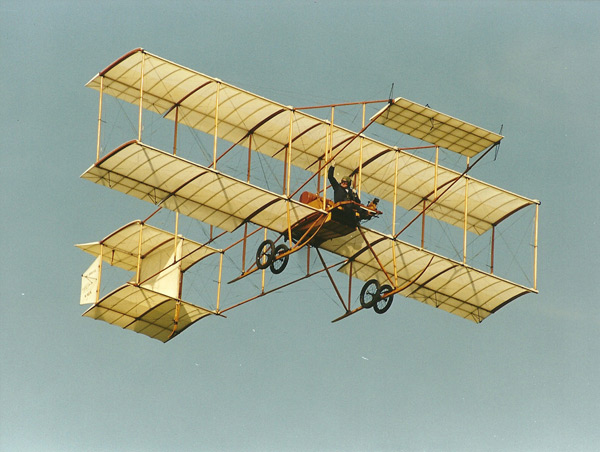 brief flying tests in a Bristol Boxkite, thus qualifying as the
first military pilot trained in Australia. Eight years later he
became the first Chief of the Air Staff, a post he held for most of
the difficult inter-war years when the Air Force's continuing
existence as an independent service was frequently under threat from
the Army and Navy.
brief flying tests in a Bristol Boxkite, thus qualifying as the
first military pilot trained in Australia. Eight years later he
became the first Chief of the Air Staff, a post he held for most of
the difficult inter-war years when the Air Force's continuing
existence as an independent service was frequently under threat from
the Army and Navy.
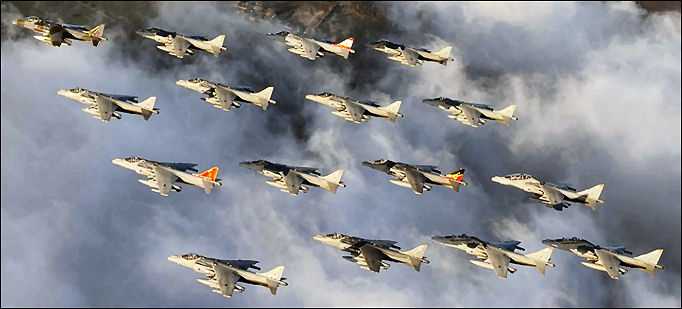
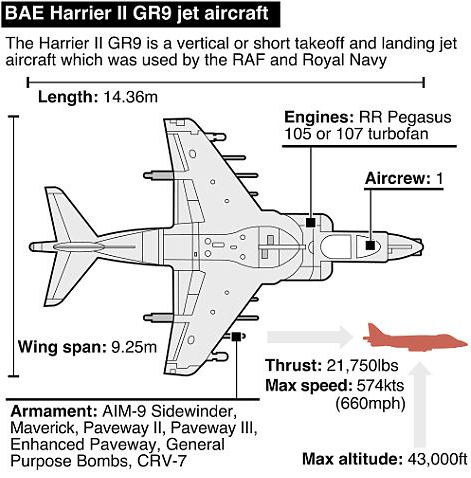
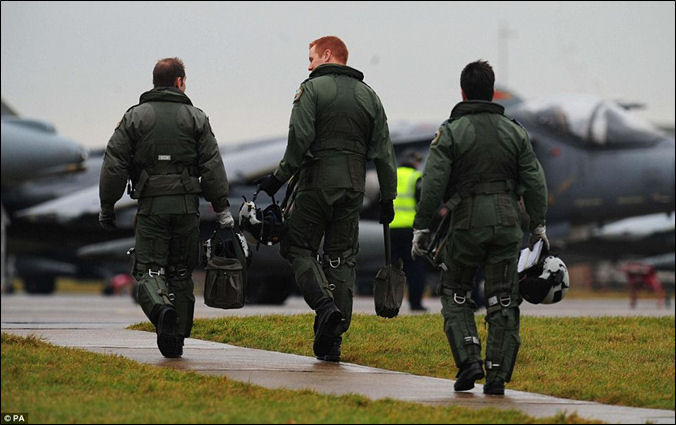
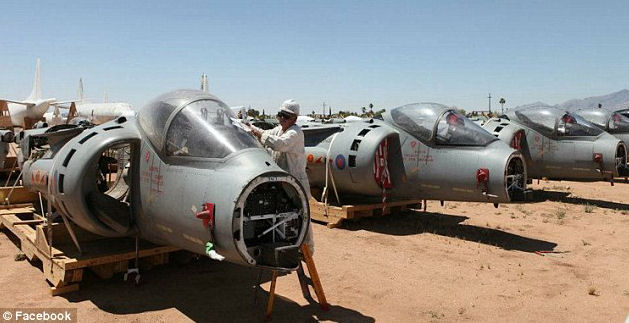
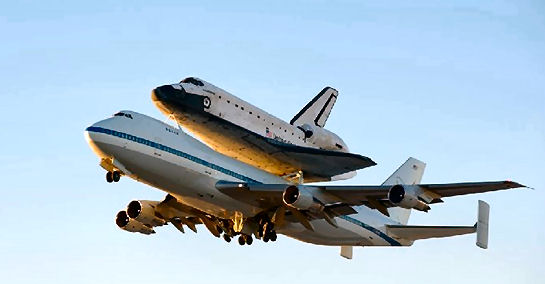 the speed at which I would be pulling on the controls to get the
nose to rise. I just could not wait, and I mean I COULD NOT WAIT,
and started pulling early.
the speed at which I would be pulling on the controls to get the
nose to rise. I just could not wait, and I mean I COULD NOT WAIT,
and started pulling early. 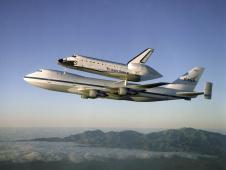
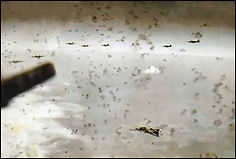 horizontal stabilizer of the Fortress and left elevator were
completely torn away. The two right engines were out and one on the
left had a serious oil pump leak. The vertical fin and the rudder
had been damaged, the fuselage had been cut almost completely
through connected only at two small parts of the frame and the
radios, electrical and oxygen systems were damaged. There was also a
hole in the top that was over 16 feet long and 4 feet wide at its
widest and the split in the fuselage went all the way to the top
gunners turret.
horizontal stabilizer of the Fortress and left elevator were
completely torn away. The two right engines were out and one on the
left had a serious oil pump leak. The vertical fin and the rudder
had been damaged, the fuselage had been cut almost completely
through connected only at two small parts of the frame and the
radios, electrical and oxygen systems were damaged. There was also a
hole in the top that was over 16 feet long and 4 feet wide at its
widest and the split in the fuselage went all the way to the top
gunners turret.